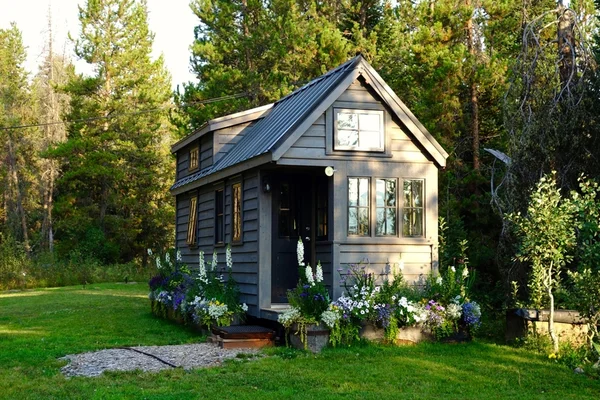Introduction
In recent years, the concept of tiny houses has gained significant popularity among people seeking a simpler and more sustainable way of living. A tiny house is a compact and fully functional dwelling that offers all the amenities of a traditional home but in a much smaller space. Building a tiny house is not only a creative endeavor but also an opportunity to embrace minimalism and reduce one’s ecological footprint. In this article, we will guide you through the process of building your very own tiny house, step by step.
Understanding the Concept of Tiny Houses
Tiny houses are a response to the modern lifestyle, which often involves excessive consumption and waste. These small dwellings encourage people to downsize and live more simply, focusing on experiences rather than possessions. They are usually between 100 and 400 square feet, making them much more affordable than conventional homes.
Advantages of Building a Tiny House
Cost-effectiveness and Affordability
One of the most significant advantages of building a tiny house is the cost savings. Traditional houses come with hefty mortgages and high utility bills, but tiny houses offer a more affordable alternative. Many tiny house builders opt for DIY construction, further reducing costs.
Environmental Benefits
Tiny houses are environmentally friendly as they require fewer building materials and consume less energy. Additionally, their small size allows for the use of sustainable materials, reducing the overall environmental impact.
Mobility and Flexibility
Unlike traditional houses, some tiny houses are built on wheels, allowing for easy mobility. This mobility offers the freedom to change locations whenever desired, making them ideal for adventurers and those who enjoy traveling.
Planning Your Tiny House Project
Before diving into construction, careful planning is essential. Here are some crucial steps to consider:
Setting a Budget
Determining a budget for your tiny house project is vital. Consider all the expenses, including materials, labor (if hiring help), and any permits or certifications required.
Choosing the Right Location
Selecting the perfect location for your tiny house involves considering factors such as local regulations, access to utilities, and proximity to necessary amenities.
Designing the Layout
Design your tiny house’s layout to maximize space efficiency and cater to your specific needs. Think about the number of rooms, storage options, and functional areas.
Acquiring Necessary Permits
Before starting construction, check local building codes and zoning regulations to ensure you have the necessary permits and approvals.
Materials and Tools Needed
Selecting appropriate materials and having the right tools for the job are crucial for a successful tiny house construction process.
Sustainable Building Materials
Opt for eco-friendly and sustainable building materials, such as reclaimed wood, recycled insulation, and energy-efficient windows.
Essential Tools for Construction
Make sure you have a toolkit that includes all the necessary tools like hammers, saws, drills, and measuring equipment.
Step-by-step Guide to Building a Tiny House
Foundation and Flooring
The first step is to lay the foundation, which can be either a traditional concrete foundation or a trailer for mobile tiny houses. Then, install the flooring of your choice.
Framing the Structure
Next, frame the walls, roof, and ceiling, carefully following the design plan.
Installing Utilities
Set up your tiny house with essential utilities, such as plumbing and electricity. Ensure that all connections are secure and meet safety standards.
Insulation and Ventilation
Proper insulation is essential for maintaining a comfortable interior climate. Additionally, ensure adequate ventilation to prevent issues like mold and condensation.
Interior Design and Decor
Personalize your tiny house by selecting suitable furniture, decor, and storage solutions that optimize space.
Safety Considerations
Safety should always be a top priority when building and living in a tiny house.
Fire Safety Measures
Install smoke detectors and fire extinguishers, and be cautious with electrical appliances.
Proper Ventilation and Air Quality
Maintain good ventilation to ensure a healthy living environment.
Maintenance and Upkeep
Tiny houses require regular maintenance to ensure longevity and comfort.
Regular Checks and Inspections
Inspect your tiny house periodically for any wear and tear and address any issues promptly.
Weatherproofing and Durability
Protect your tiny house from weather elements by using weatherproof materials and conducting routine weatherproofing checks.
Legal and Zoning Regulations
Understanding local building codes and zoning regulations is crucial when constructing a tiny house.
Addressing Zoning Restrictions
Ensure your tiny house complies with local zoning laws to avoid any legal issues.
Embracing a Minimalistic Lifestyle
Living in a tiny house goes hand in hand with embracing minimalism.
Downsizing and Decluttering
Simplify your life by reducing unnecessary possessions and clutter.
Living Sustainably in a Tiny House
Take advantage of a tiny house’s small ecological footprint to live more sustainably.
Challenges and Solutions
Building and living in a tiny house may present some challenges.
Space Constraints
Maximize space usage by incorporating smart storage solutions and multifunctional furniture.
Storage Solutions
Find innovative ways to create storage spaces that accommodate your belongings.
Adapting to a Smaller Living Space
Adjusting to a smaller living space may take time, but it can lead to a more fulfilling lifestyle.
Tiny House Communities and Resources
Joining tiny house communities provides support and resources for tiny house enthusiasts.
Online Forums and Resources
Explore online forums and websites dedicated to tiny house construction and living.
Frequently Asked Questions (FAQs)
- What is the average cost of building a tiny house?
- The cost of building a tiny house can vary depending on factors such as size, materials, and location. On average, it may range from $20,000 to $50,000.
- Can I build a tiny house on wheels legally?
- The legality of building a tiny house on wheels varies depending on local regulations. Some areas allow it as long as it meets specific requirements.
- How can I make the most of limited space in a tiny house?
- Utilize vertical space, choose multi-functional furniture, and keep your possessions organized to maximize space.
- Are tiny houses energy-efficient?
- Yes, tiny houses can be energy-efficient, especially when equipped with energy-saving appliances and insulation.
- Can I build a tiny house if I have no prior construction experience?
- While prior construction experience is beneficial, there are resources, workshops, and guides available to help beginners with the building process.
Conclusion
Building a tiny house is a transformative experience that allows individuals to break free from conventional living patterns and embrace a simpler and more sustainable lifestyle. By following the steps outlined in this article and addressing the challenges that may arise, you can create your own cozy haven on a smaller scale. Embrace the benefits of tiny living, reduce your environmental impact, and enjoy the freedom that comes with a mobile and self-sufficient dwelling.





Leave a reply